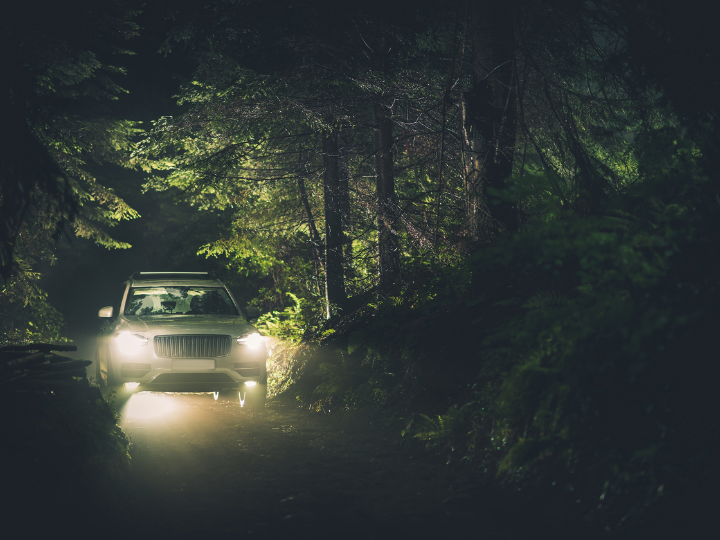As the summer days fade and fall sets in, shorter daylight hours can catch drivers off guard. With the sun setting earlier, many of us find ourselves driving in the dark more frequently, whether it’s for commuting, running errands, or shuttling kids to and from extracurricular activities. Nighttime driving presents unique challenges, especially as we adjust to the season’s change. Here’s a guide to help you navigate the roads safely as the evenings grow longer.
The Impact of Shorter Days
With fall comes earlier sunsets, meaning the hours between dusk and nightfall arrive much sooner than during summer. This shift can make evening commutes and trips feel more challenging, as the combination of fading light and increased traffic creates a perfect storm for accidents. The period just after sunset, known as dusk, is particularly tricky as the low angle of the sun can cause glare, making it harder to see pedestrians, cyclists, and other vehicles.
Safety Tips for Driving at Dusk
1. Adjust Your Speed
As daylight diminishes, visibility is reduced, and reaction times may be slower. It’s crucial to adjust your speed accordingly, especially in residential areas or on roads with heavy pedestrian traffic. Driving at a slightly slower pace can give you the extra time needed to react to sudden obstacles or changes in road conditions.
2. Use Your Headlights Wisely
Turn on your headlights as soon as the sun starts to set, even if it’s not fully dark yet. This not only helps you see better but also ensures other drivers can see you. Remember to check that all your lights, including high beams and brake lights, are functioning correctly. Avoid using high beams in well-lit areas or when driving behind another vehicle to prevent blinding other drivers.
3. Reduce Glare
The glare from the setting sun or oncoming headlights can be blinding during dusk. Keep your windshield clean, both inside and out, to minimize glare. Wearing polarized sunglasses can also help reduce the harshness of the sun’s rays. If you’re still struggling with glare, consider adjusting your car’s sun visors to block the sun without obstructing your view of the road.
4. Stay Alert for Wildlife
Fall is an active time for wildlife, especially deer, which are more likely to be on the move during dawn and dusk. Be extra cautious when driving through wooded areas or rural roads where animals may suddenly appear on the road. Slow down, use your high beams when appropriate, and keep an eye out for any movement along the sides of the road.
Tips for Nighttime Commutes and Other Trips
Keep Your Eyes on the Road: Driving at night requires heightened focus, as it’s harder to see and be seen by others. Avoid distractions like using your phone, adjusting the radio, or eating while driving. Keep your eyes on the road and scan ahead for any potential hazards.
Maintain a Safe Following Distance: At night, it’s harder to judge the speed and distance of other vehicles. Maintaining a greater following distance gives you more time to react to sudden stops or changes in traffic. The general rule is to keep at least a three-second gap between you and the car in front of you, but at night, increasing this to four or five seconds is even better.
Plan Your Route: If you’re heading out on a long trip or driving in an unfamiliar area, plan your route ahead of time. This can help reduce the stress of navigating in the dark. GPS devices and apps are helpful, but make sure they’re up to date and easy to follow without taking your eyes off the road for too long.
Shutting Kids Safely
Ensure Child Safety Seats Are Secure: If you’re driving with young children, double-check that their car seats are properly installed and secured. Make sure older kids are wearing their seatbelts correctly, and remind them to stay seated and buckled up throughout the journey.
Avoid Rush Hour: If possible, plan your trips around rush hour to avoid heavy traffic. This can make your drive smoother and less stressful, especially when driving in low light conditions.
Teach Kids About Nighttime Safety: Talk to your kids about the importance of staying safe around cars at night. Teach them to look both ways before crossing the street, avoid running near parked cars, and always stay within your sight when getting in and out of the vehicle.
_
As the days grow shorter, taking extra precautions while driving at dusk and at night can make all the difference in keeping you and your family safe. For peace of mind on the road, make sure your auto insurance is up to date and includes the right coverages for your lifestyle. Contact us to review your coverage and ensure you’re protected no matter what the season brings.












